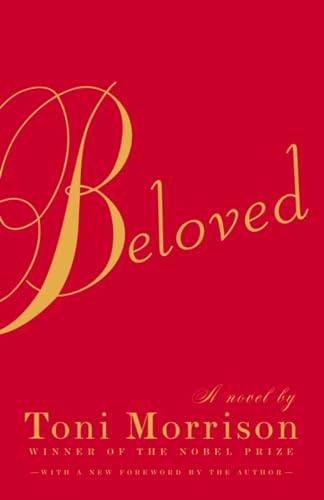Hey folks, Steve here! Buckle up, because I’m about to kick off my review of Toni Morrison’s incredible work. I’ve laughed, scratched my head, and even got chills while reading her stuff, and now I’m here to spill the beans. From ghostly guests that outstay their welcome to mothers who could write the book on tough love, Morrison’s stories hit hard and stick around in your brain. I’ll break down the highs, the lows, and everything in between, so you know what you’re getting into before you hand over your cash. Trust me, I’ve done the heavy reading, so you don’t have to (but you probably should, anyway!).
In a nutshell
If you like stories that mix real history with a touch of magic, Toni Morrison is your go-to author. She takes on tough stuff, like family, memory, and the long shadow of slavery, all wrapped in poetic words.
Her books are usually classed as literary fiction, but there’s a bit of ghost story in there too. You might laugh, you might cry, and you will probably scratch your head at some point. Even so, Morrison’s writing will stick with you long after you close the book.
The Lasting Chains: Slavery’s Impact on Toni Morrison’s Characters
When I first read Toni Morrison, I remember thinking, “Wow, these characters are holding on to history like I hold on to old pizza in the fridge—too long, sometimes.” Morrison’s books don’t just mention slavery; they show us how it shapes a person, their choices, and even their dreams. If you expect her characters to waltz through the story untouched, think again. They carry the weight of the past like a backpack full of bricks, and believe me, some of those bricks are labeled shame, loss, and a whole mess of pain.
Take Sethe from Beloved. She is not just a mother; she’s a mother whose every act is stamped by her time in slavery. The fear and trauma never really leave her, even years later. It’s like trying to shake off glitter—good luck with that. Morrison makes sure the scars are visible, not just to Sethe but to everyone around her. Her choices, good or bad, all show the long shadow that slavery casts on her life. And then there’s Paul D. He’s strong on the outside but haunted on the inside. He tries to lock his memories away, but in Morrison’s world, locked doors don’t stay shut for long.
Morrison uses her characters to show that slavery wasn’t just something that happened and disappeared. Its impact moves through families, messing with love, hope, and even the way people see themselves. You can’t toss it away. It sticks, and Morrison’s writing makes sure we feel every bit of it.
Now, if you think things couldn’t get more complicated, wait until we run into some ghosts… and I’m not just talking about bad in-laws.
Supernatural Surprises: Ghosts, Spirits, and Toni Morrison’s Otherworldy Flair
Let’s get spooky for a second. When Toni Morrison writes, you do not just get people, you get people plus ghosts, curses, and a good handful of what I call ‘weird wobbly magic.’ If you’ve ever read Beloved, you know what I mean. There’s a ghost baby in the house, and she’s got some serious attitude. The furniture jumps, the air gets thick, and you find yourself looking over your shoulder as you read. Morrison doesn’t use ghosts just to be creepy (she is not Stephen King, after all). Instead, the supernatural is a way for her to show the pain and the memories that won’t go away, no matter how many times you sweep the porch or lock the doors.
Now, I read this book with my buddy Marcus, who gets scared by his own shadow. He lasted three chapters before he asked to read it with all the lights on. There’s just something special about how Morrison mixes real life with haunting. Ghostly visitors in her stories act like family members who refuse to leave the dinner table, and they are always sticking their noses in the business of the living. I found this both funny and pretty deep—because these spirits are leftovers of the past, and they mess with the heads of everyone in the story.
What I liked most is that Morrison makes you believe in this magic, even if you’re a big skeptic like me. Still, sometimes the ghost stuff gets a little much, and I had to stop to remember who was actually alive. But hey, isn’t confusion a little bit like life? Stick around, because next I’m talking about motherhood and family—it’s about to get emotional, folks!
Motherhood and Family Ties in Toni Morrison’s Works
If you ever want to feel like your family drama is mild, just spend a few hours with a Toni Morrison novel. Trust me. Morrison has a special way of making every mom, daughter, and sister leap off the page (sometimes almost literally—looking at you, Beloved).
Motherhood in Morrison’s books is never simple or tidy. It swings between love and pain, often in the very same sentence. Sethe in Beloved just about breaks my heart every time. She’ll do anything for her children, even things you and I would never dare. This love pushes the limits, making us question what is right or even humanly possible.
Family isn’t only about blood for Morrison. Sometimes, it’s the people who choose you—or who you choose along the way. In Sula, the friendship between Sula and Nel is so strong it feels like family. Their bond gets tested by life’s wild twists, but their love shapes who they are.
My friends and I talked about how Morrison shows family as both shelter and storm. One minute, you’re safe in your mother’s arms. The next, you’re dodging emotional lightning. These stories made us all call our moms (well, except for Jerry, who just messaged her on WhatsApp).
In Morrison’s world, family can save you, hurt you, or do both at once. It’s messy, real, and sometimes hard to read. But that’s why it sticks with you, even after you put the book down.
Ready for more? Buckle up—next we’re jumping straight into Morrison’s writing style and narrative structure. It’s a wild ride, and you won’t need a bookmark (but keep one handy anyway).
Why Toni Morrison’s Writing Style is a Whole Mood
If you have read a Toni Morrison book, you know the writing is anything but normal. Morrison doesn’t lay out her stories like your grandma stacks pancakes. Nope – she mixes things up! Her narrative jumps around in time like a confused squirrel, and I mean that in the best way possible. One moment, you’re in 1920, and the next, you’re back in someone’s childhood, chasing chickens or something. It keeps you awake, trust me.
Now, about her words. Toni Morrison writes sentences that make you stop and say, “Whoa, that hit hard.” She does not use a billion fancy words just to show off. Instead, she picks the best simple ones and makes them do cartwheels. She finds beauty in pain, and joy in places you might not expect. Sometimes, her writing is so sharp you feel like you just stubbed your toe, but you kind of like it.
The structure is pretty wild too. Morrison throws in different points of view like she’s hosting a dinner party and every guest has something to say. It can be tough to follow at times—my buddy Greg had to check if he’d missed a page or two—but it all comes together in the end. When the puzzle fits, it feels magical.
Do I recommend reading Toni Morrison? Absolutely. Her writing style and narrative won’t coddle you, but you’ll thank her for it later. Bring snacks and a notebook, because you’ll want to remember her lines for the next family argument!
Conclusion
So there we have it, folks. Toni Morrison’s books pack you into a time machine, toss in a few ghosts, and send you on a wild ride through love, pain, and family messes. Her writing isn’t always a walk in the park—sometimes it’s more like stumbling around in the dark, but when the light comes on, wow, it’s worth it. I can’t say Morrison is for everyone (my buddy Dave quit after chapter one), but if you like books that make you feel and think, you’ll find plenty to love here. And hey, if nothing else, you can brag at parties that you read Toni Morrison. This concludes my review. Now go read a book—or at least pretend you did!


